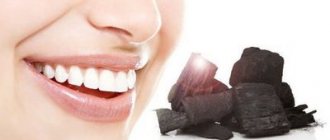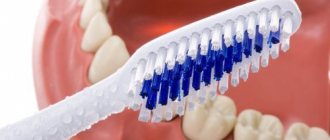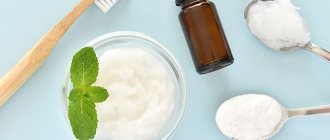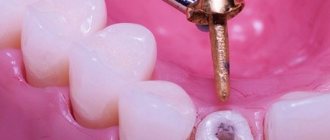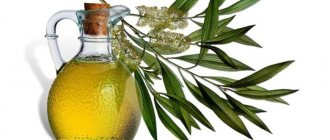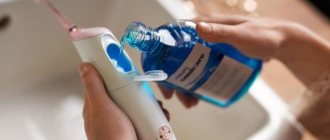There are universal products that can be used for medical purposes, in cosmetology, and in the household - these are baking soda and hydrogen peroxide, available to everyone. The effectiveness of their use in these areas has been tested by time and many, not succumbing to the advertising of modern cleaning products, continue to use safe “grandmother’s” products. There are simple and effective methods for cleaning kitchen utensils using baking soda (sodium bicarbonate) and hydrogen peroxide.
How to choose a method for cleaning a frying pan
To properly clean an old frying pan from carbon deposits, first of all, determine what material it is made of. There are cast iron, aluminum and stainless steel frying pans.
In modern industry, cookware with non-stick coating is gaining increasing popularity. She requires careful and delicate care. Such pans are easy to clean, as their surface protects against the formation of carbon deposits on the dishes.
How to use frying pans correctly
It is better to use each specific type of cookware in accordance with the operating instructions. Four simple rules are universal for any frying pan.
The product is presented on the market in a wide variety, differing in shape, size, purpose and coating.
- After purchasing, new utensils must be washed with detergent or soapy water.
- Some types of products are lubricated with vegetable oil before use.
- The size of the burner should not exceed the size of the bottom. An open flame will damage the outer coating of the walls.
- Sudden temperature changes are harmful to cookware and can change their properties. Do not put hot pans in the refrigerator and cool them with cold tap water.
Traditional methods against soot in a frying pan
At home, you can use improvised means that are always available in the kitchen. They safely allow you to clean the inside of the frying pan from carbon deposits.
The prepared table will help determine contraindications for using a particular cleaning product for a specific type of frying pan.
Citric acid, vinegar and washing powder
The method involves use with different approaches.
- When the deposits on the dishes are fresh enough, lemon will do its job perfectly. To do this, you need to place the frying pan in the solution (for 1 liter of water - 1 tablespoon of citric acid). Boil for 20-30 minutes. Rinse with warm water.
- You can add vinegar to the prepared solution. Boil the frying pan in this water for 10-15 minutes. Turn off the heat and clean the dishes with a sponge after 2 hours. Then you can add washing powder to the same composition, bring to a boil, and leave for another 1 hour. Rinse with warm water.
- If there are damages and scratches on the frying pan, it is better not to boil the dishes. After each time of use, it is enough to wipe with a sponge soaked in a weak solution of acetic acid.
Important! The method cannot be used to clean aluminum pans, as well as dishes with damaged coating.
Coca Cola
The carbonated drink has long established itself as an excellent means for cleaning pots and pans. Just pour Coca-Cola into a bowl, bring to a boil and after 15 minutes turn off the stove. Leave it like this until it cools completely.
Important! The method is ideal for cleaning cast iron and stainless steel cookware.
Mustard powder
In Soviet times, mustard was valued as the most effective means of removing fat. To do this, a frying pan or saucepan was heated over a fire. They covered the bottom with mustard powder and scrubbed it off. After 20 minutes, wash off with water.
If it was not possible to wash it the first time, then the dishes were soaked in mustard solution for 40 minutes. Then washed again.
Cleaning and boiling in salt solution
Cleaning with salt is suitable for almost any dishware.
- Salt is poured onto the bottom of the frying pan (can be used together with sand).
- Lightly moisten and let stand for at least 2 hours. Sponge.
- If this does not help, you must immediately add water and boil. Perhaps this option will be more effective.
For your information! Do not apply to Teflon and ceramic cookware.
Using hydrogen peroxide, baking soda or soda ash
- Baking soda will help clean the pan from years of carbon deposits. Place a frying pan in a container with boiling water and soda. Reduce the heat to low and leave for 30 minutes. Then turn it off. Let it sit for another half hour. The dishes are washed with warm water.
- If this method does not help, add hydrogen peroxide and a few drops of dishwashing detergent to the soda solution. Leave for another 30-45 minutes. Rinse thoroughly with water several times. The method is actively used for cleaning non-stick frying pans.
Another option (always effective) is when glue and soap are added to the soda solution (see recipe above).
Ammonia and borax for cleaning cast iron surfaces
If food is badly burnt, the prepared solution will help to cope with the soot.
- For 300 ml of water, take ammonia and 12 g of borax.
- This mixture is poured onto the burnt surface.
- After 1 hour, the liquid is drained, the carbon deposits should easily come away from the surface.
- Kitchen utensils are washed and wiped.
Action
Baking soda and peroxide react to form a clear liquid. The molecules of this alkaline solution act on acids and eliminate them. Due to bactericidal, microbes or bacteria contained on the surface are eliminated.
The two products can also be combined with salted water or alcohol. These components are added to a solution of soda and peroxide to enhance the cleaning effect or add shine. However, they must be washed with gloves to avoid irritation on the skin.
Removing carbon deposits from a frying pan using household chemicals
It is advisable to choose a dish cleaning product that does not contain abrasive substances. It is better to use household chemicals to clean the outside of the frying pan. To clean the inside of the dishes, it is safer to use folk remedies.
- Schumannite is one of the most powerful grease cleaners. Contains alkali. Copes with even the most stubborn stains on cast iron, enameled and metal products.
- "DazhBo" is a washing liquid suitable for cleaning any surface.
- "Easywork" - copes well with any dirt.
- "Unicum" is a universal cream for cleaning dishes. It has a pungent odor, but is capable of cleaning even the most multi-layered deposits in 2 minutes.
- Frosch is a plant-based cleaner. Has a convenient sprayer. It is in great demand among housewives.
The use of any chemical means compliance with safety measures. Therefore, before you start cleaning dishes with a chemical composition, you must wear rubber gloves. If the procedure is carried out at home, you should open a window or vent in the kitchen.
The main features of cleaning pans at home
Sometimes just washing dirty dishes is not enough. Heavy contamination requires special attention. At home, you can use various cleaning methods.
Residual heat after cooking helps remove dirt more effectively.
There are special tools for cleaning pans, such as metal sponges and scrapers. For washing, various substances are used, both special and stored in every kitchen. But not all of them are universal; some may not only fail to do the job, but also damage the dishes. Each type of frying pan has its own washing and care nuances.
Ceramic
If the food is burnt or a layer of soot has formed, then the housewife is faced with the question: how to clean a ceramic frying pan without damaging the coating? It should not be rubbed too hard. For washing it is better to use a soft cloth or sponge. The use of powder and abrasive materials is generally prohibited.
Such a frying pan should be cleaned using special products, without hard sponges or abrasive particles.
To remove a small layer of carbon deposits from a ceramic frying pan, you can use alcohol by wiping the walls with cotton wool soaked in it. There is also a method using toothpaste. Thanks to its bleaching properties, it can completely clean light-colored surfaces.
You need to treat ceramic coating with care, then it will last a long time.
ADDITIONAL INFORMATION! Compared to all others, ceramic frying pans are safer. In addition, the consumption of vegetable oil for frying is minimal.
Cast iron
Cast iron is the least demanding to care for. To clean cast iron pans, it is good to use metal scrapers and graters. But if the soot is old, then it is better to soften it first. This can be done using the simplest substances, vinegar and soda. But for this you need to boil the pan.
Recommendations from experts
Manufacturers of cookware recommend adhering to rules that help extend the life of the frying pan. It is important to follow preventive measures that prevent further contamination.
- When cooking and stirring food in a frying pan, you must use a wooden or plastic spatula.
- Use cleaning powders, scratching sponges, and scrapers as little as possible. This will prevent scratches on the inside of the pan.
- If the frying pan is often washed in the dishwasher, then you must clean it by hand once a month. In this case, you can easily notice the appearance of soot, which can be easily eliminated at the initial stage of its manifestation.
- Melamine sponges are well suited for cleaning ceramic products and enamel dishes. But they can only clean the outside.
- An aluminum frying pan should never be rubbed with an iron sponge. The damaged surface quickly oxidizes and the oxide gets into the food. Which will negatively affect human health.
- Baking soda or coarse salt helps get rid of rust on an old frying pan. After washing, be sure to heat the dishes so that the food does not burn.
Cleaning methods
Cast iron products have many advantages, so they are not cheap. Throwing away a good thing if it is heavily soiled, and even more so if it is slightly soiled, is impractical and wasteful.
